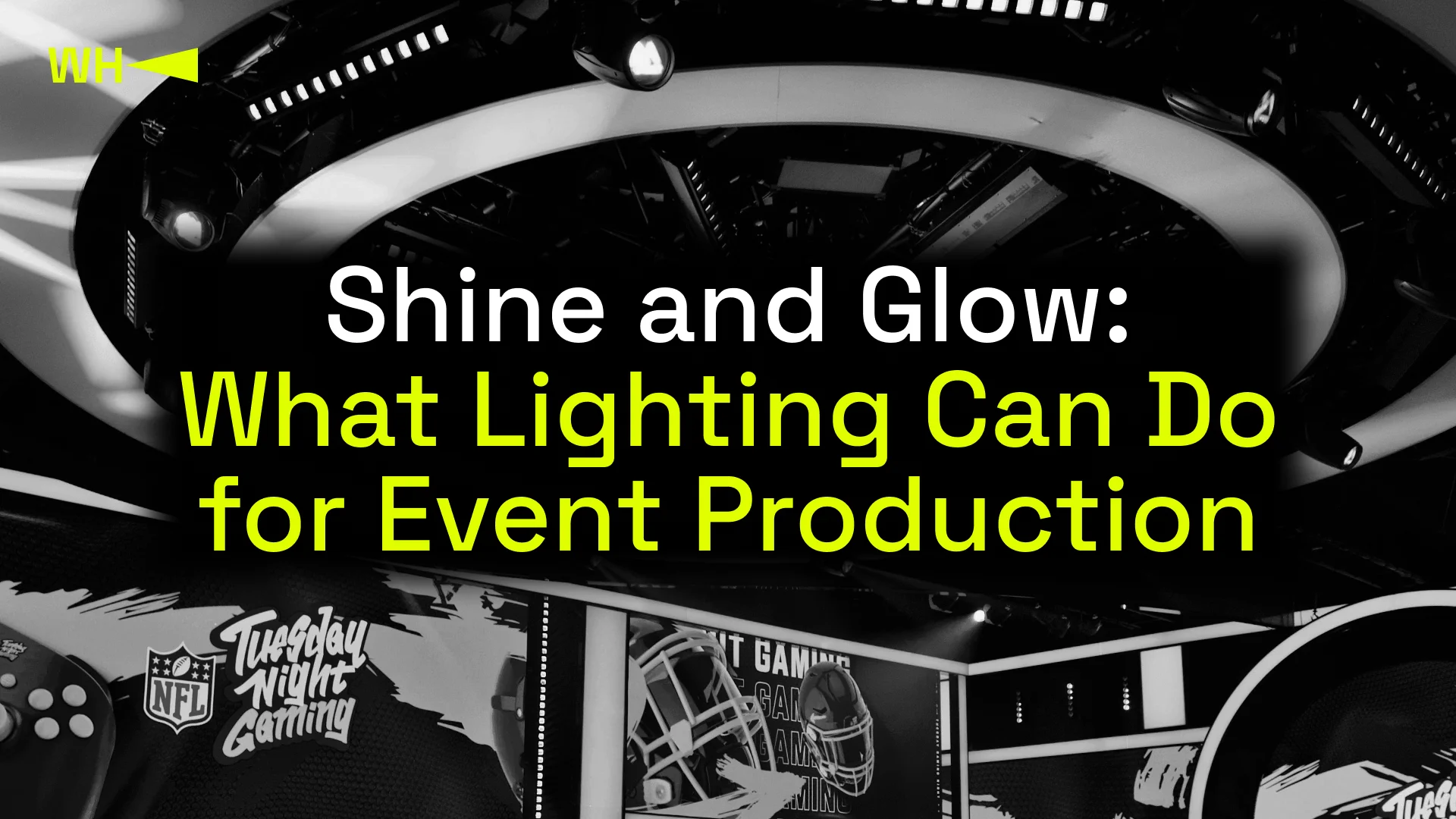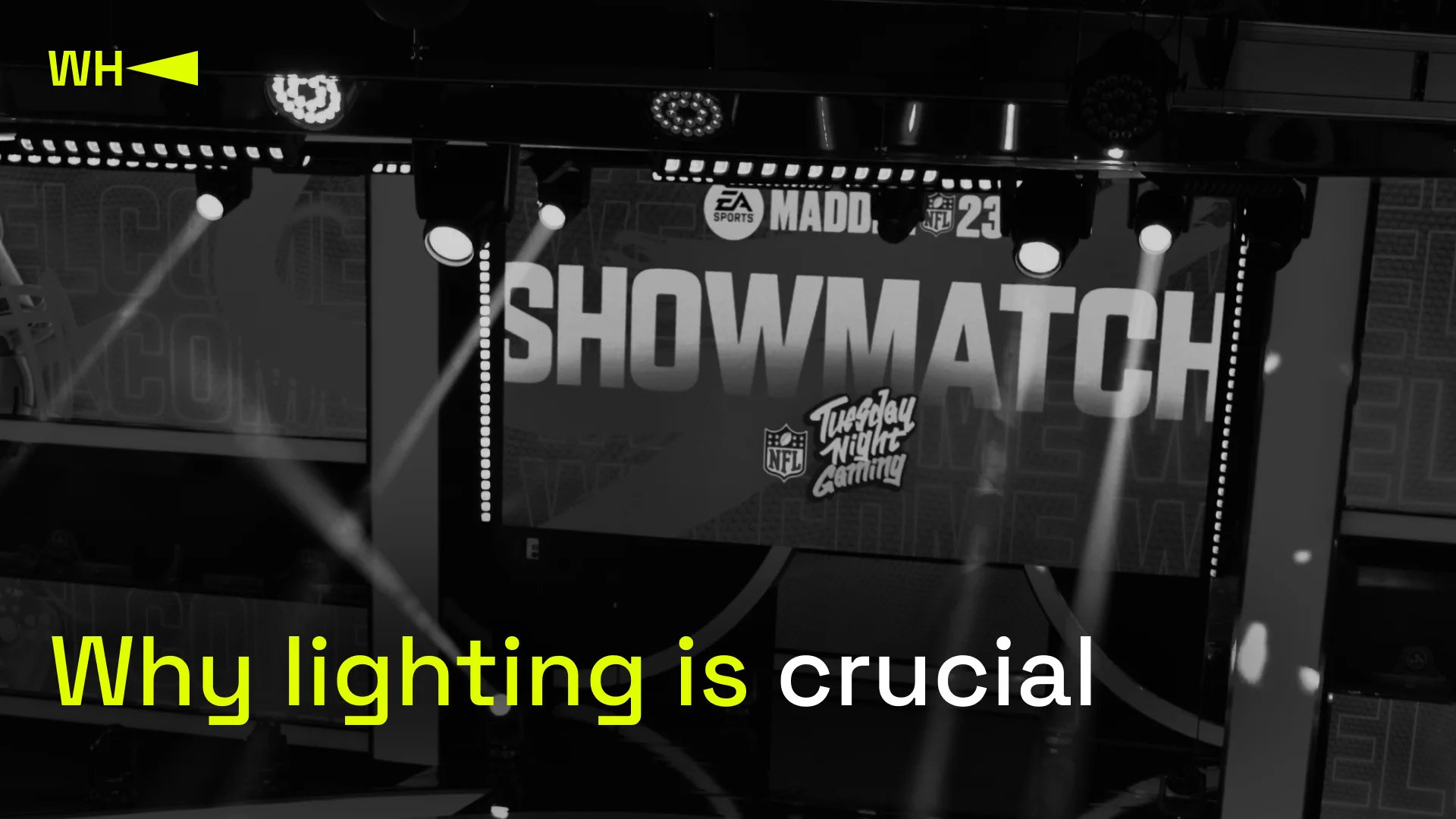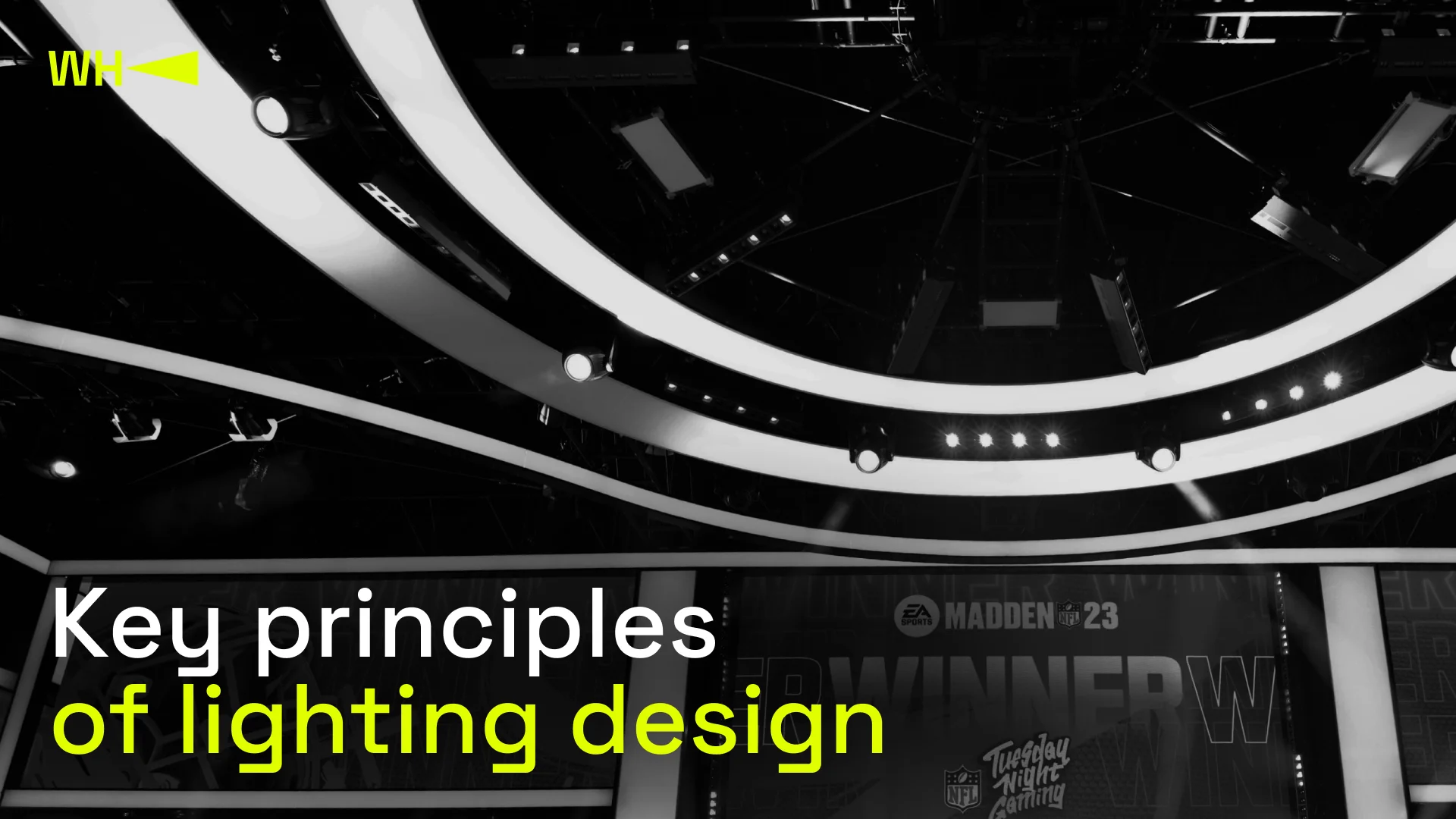Oct. 13, 2023
Shine and Glow: What Lighting Can Do for Event Production

3 min read
In event production, every detail matters. No event can take place without dynamic music, thoughtful design, and charismatic hosts. Like all of the above, lighting as a constituent part of an event is crucial too. It has the power to shape the mood of fans and keep up the atmosphere. Lighting is the visual effect you will see most often at a show, and this article uncovers why it is so.
Why lighting is crucial
The most important task of lighting is to allow the audience to see what is happening onstage. Any type of lighting, from a regular lamp to a spotlight, can do this, so let’s not dwell on this for longer than absolutely necessary.
Focus
Lighting has the power to channel the audience’s attention. As an example, think of the lighting in theater, when the beams of light only illuminate the stage without touching the audience. This allows people to focus on the action, not on the entire hall and the other spectators.
Atmosphere and mood
With the help of light, organizers can build up tension or, on the contrary, elicit a flurry of applause. The play of light is closely intertwined with the plot of the show itself. For example, at the climax, the stage is flooded with multicolored lights, while during other scenes, specialists can use softer light purely for illuminating objects. All these details complement the atmosphere and support the audience’s mood.
Key principles of lighting design
Event theme and design
There is no universal approach to lighting that can be applied to world tournaments, business summits, and entertainment shows alike. For each type of event, a unique solution must be created. Both the type and color of lighting should match the overall theme and desired atmosphere of the event.
Key areas
As mentioned earlier, light helps keep the audience’s focus. Therefore, it is important to highlight the key objects that need to be emphasized. This can be individual objects, people, or entire areas. It is important to consider the intensity and direction of light to create depth and volume and enhance the overall visual effect.
Usability
When planning the set and decor of a show, the team must consider how comfortable it will be for everyone involved. Will it be easy to replace a piece of equipment at the right time? Will lighting equipment interfere with the work of other specialists, for example, camera operators?
Schedule
Putting together a light set is closely linked to the script of the event as a whole. It is important for specialists to stick to their timings when preparing for the show. A lighting set is not the product of improvisation — creating it is a lengthy process in which the specialist takes into account every detail of the show, including stage design, hosts’ positions, and the timeframe of each scene.
Like music, lighting acts on the viewers’ senses and helps create an immersive effect. A lighting specialist can completely transform your show, highlight specific details, and put the audience in the right mood. Creating a lighting set is a complex process involving lots of tech tools, but this is what makes a merely good event grand.

